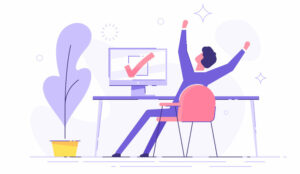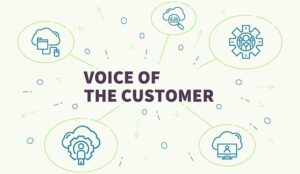Darren Gracie of GCI shares his advice for optimizing your Voice of the Customer (VoC) and gathering the best customer information.
VoC is the term used to describe both the stated and unstated needs and requirements of your customer and their perception of your products and services.
A successful VoC programme will help you decide what products and services you should offer and enable you to identify critical features and specifications for those products, services and any related processes.
VoC can not only help you get a baseline measure of your customer satisfaction, it allows you to understand key customer satisfaction drivers in order to measure improvement.
More importantly, though, VoC helps your business decide where you should focus your efforts on introducing improvement.
When creating your VoC programme it’s essential that you involve the wider business and ensure key stakeholder engagement.
Where VoC initiatives usually fail is when they operate in isolation, which typically results in a disconnect between the Voice of the Business (VoB) and the VoC – which causes friction that creates tension and conflict between other departments and business units.
For this programme to succeed, it’s imperative that both VoB and VoC are fully aligned and working together towards the same goals.
I would always recommend splitting your project and responsibilities into four distinct areas. These are;

I’m specifically going to provide best practice and tips around ‘Step 2 – Gathering Customer Information’, but I am always happy to go into more detail on how to identify customers, analyse customer information and determine customer needs in follow-up sessions or future articles.
Gather Customer Information – Step 2
The team responsible for managing step 2 has a big task ahead of them and it’s essential that they are able to identify and acquire relevant, topical and accurate information about the customer. It’s this customer information and feedback collected that will influence the direction of the business and prioritize improvement projects.
Therefore, to ensure maximum value and benefit, there are four things to keep in mind when reviewing this data.
- Is your product or service fit for purpose?
- What are our features?
- What are our customers’ wants and needs?
- What are our customers’ needs, wants and seen as amazing?
Fit for Purpose
- Customers want a product or service to meet their needs – no more, no less. You should build your product or create your service to the exact features and capabilities and be aware you can have too much as well as too little in terms of quality.
- What the customer considers ideal is often referred to as “fit for purpose”.
- One way to think about your product or service is as a group of features.
- From this perspective, to be “fit for purpose” means that the product or service needs only the desired combination of features and for each feature to have the correct level of quality.
Feature Set
From your customers’ point of view, every product or service has features from the following categories:
| Feature | Customer | What Is It |
|---|---|---|
| Basic | Needs it | The essential feature set (must have). If a product or service lacks a basic feature, the customer simply will not consider it, no matter how attractive it is. |
| Expected | Wants it | What the customer would expect from this type of product or service (should have). |
| Excited | Delighted by it | Unexpected but desirable features not normally expected (could have). |
| Dissuader | Rejects it | Features which actively dissuade the customer from considering your product or service. |
Wants and Needs
- People often confuse what they need with what they want. ‘Needs’ are basic – your product or service is no good without them, whereas ‘wants’ are desirable but not absolutely necessary.
- Needs and wants are often judged emotionally by the customer, which is why observing and testing their behaviour is always advisable.
- ‘Delighters’ are distinct from ‘wants’ as the customer does not expect them, but is amazed and overjoyed when they are provided.
Needs, Wants and That’s Amazing
- Basic features identify what customers need. The best you can do if you only offer ‘basic features’ is to take your customer to a feeling of neutrality or ambivalence. However, without a basic feature, the customer is likely to reject the product or service.
- Expected features define what customers want. Once basic needs are satisfied, the expected features influence buying decisions. (Remember, you can have too much of a good thing).
- Exciting features are the ones that make customers evangelists for your products, services and company.
Key Points
- Market research is not very effective at identifying basic features (they are simply expected) or exciters (they are unknown).
- Expected can be discovered by market research and observation.
- Expected can lead to dissatisfaction if poorly implemented.
Most of the time, just asking a customer what they want isn’t enough. The team responsible for step 2 has to be able to determine:
- What the customer thinks they want
- What the customer tells you they think they want
- What you think the customer told you they wanted
- What the customer really wants
Categorizing VoC data into one of the above enables you to measure the quality of information gathering and helps you to concentrate on where to improve in certain areas.
Examples of Customer Information Sources

Darren Gracie
| Research Methods | Listening Post | Internal & External Data |
|---|---|---|
| Interviews | Complaints | Existing Company Information |
| Focus Groups | Customer Service Agents | Industry Experts |
| Surveys | Sales Agents | Secondary Data |
| Observation | Billing | Competitors |
| Accounts Receivable | ||
| Collection |
Once you gather this information, it’s best to analyse it in order to then determine customer needs. Easier said than done, of course, but following the advice in this article will help to put you in the best position possible.
Good luck!
Author: Robyn Coppell
Published On: 26th Jul 2019 - Last modified: 24th Sep 2019
Read more about - Guest Blogs, GCI





































